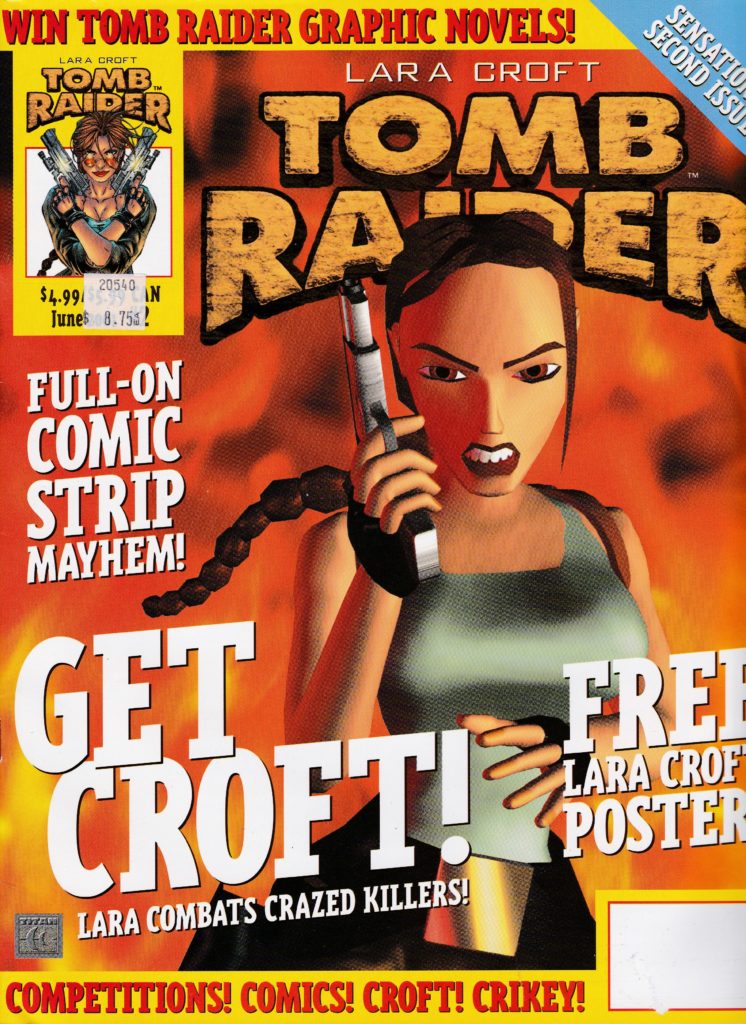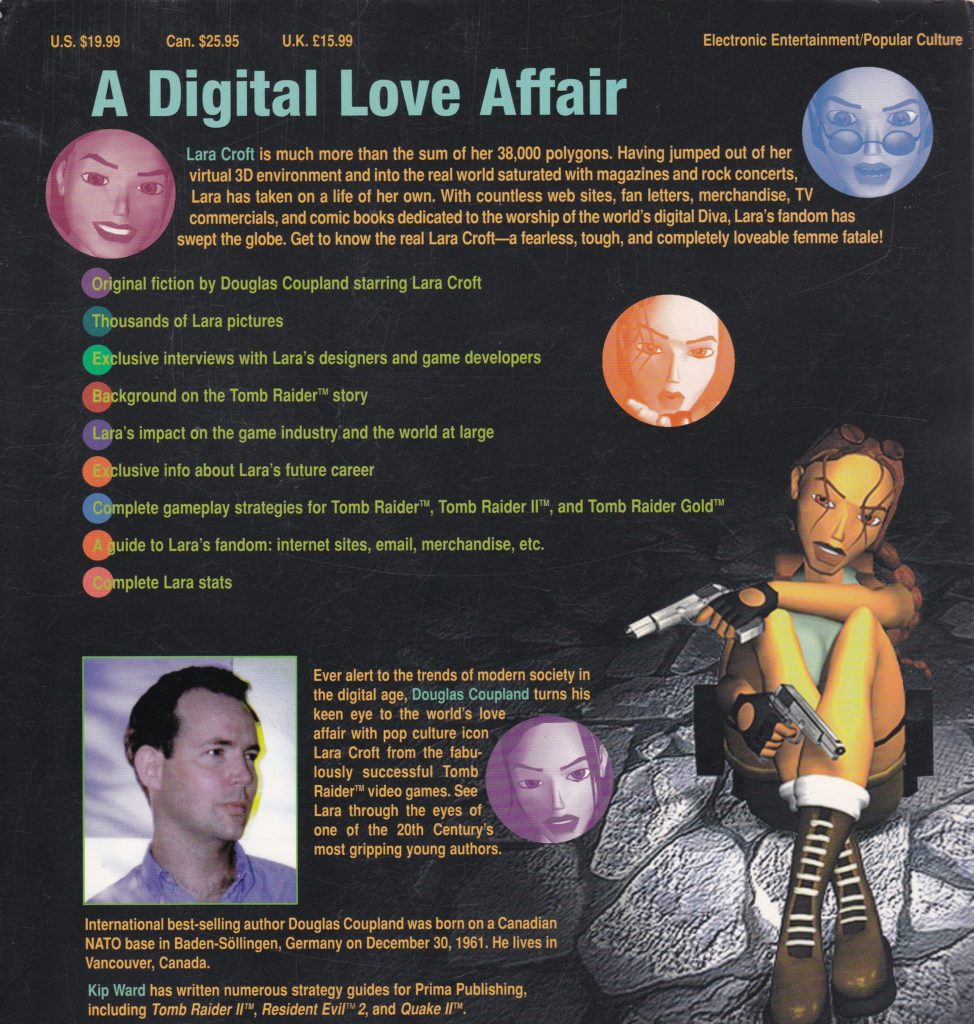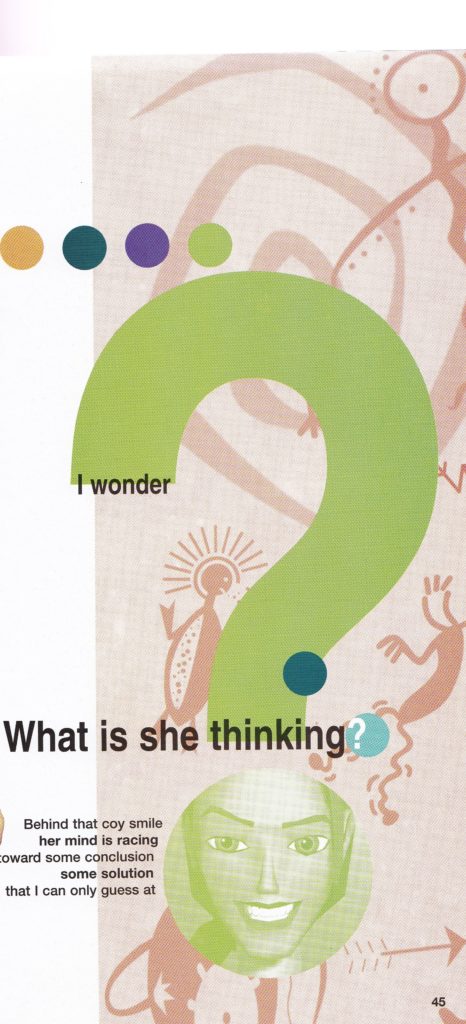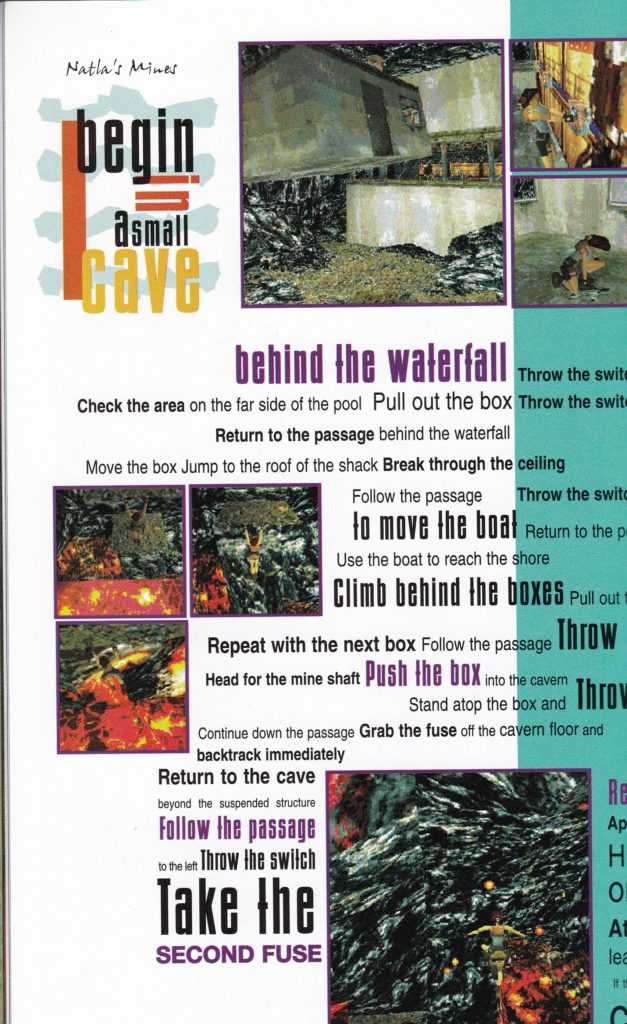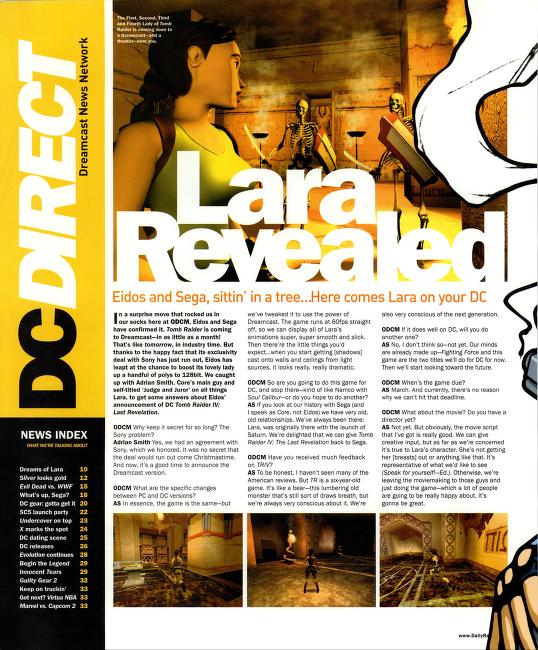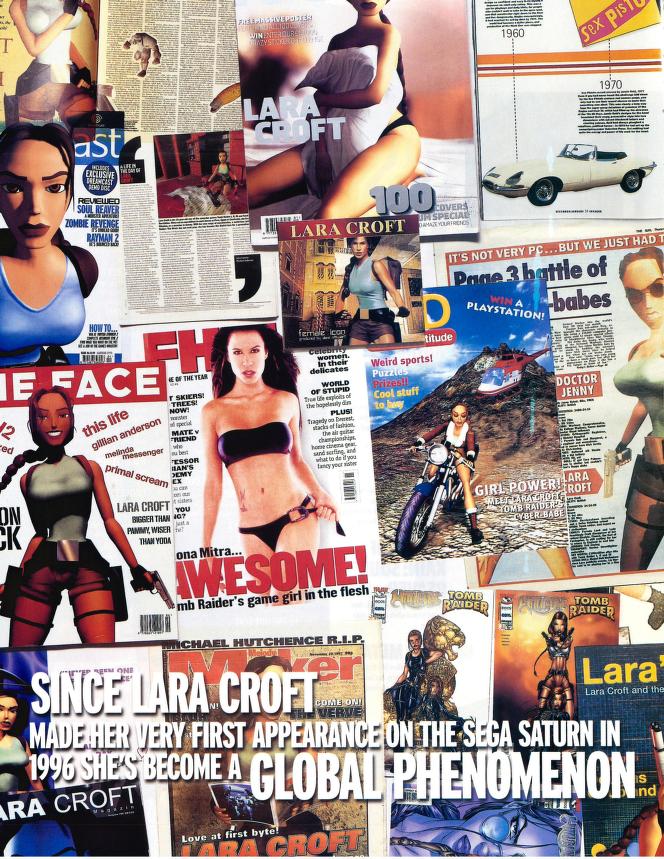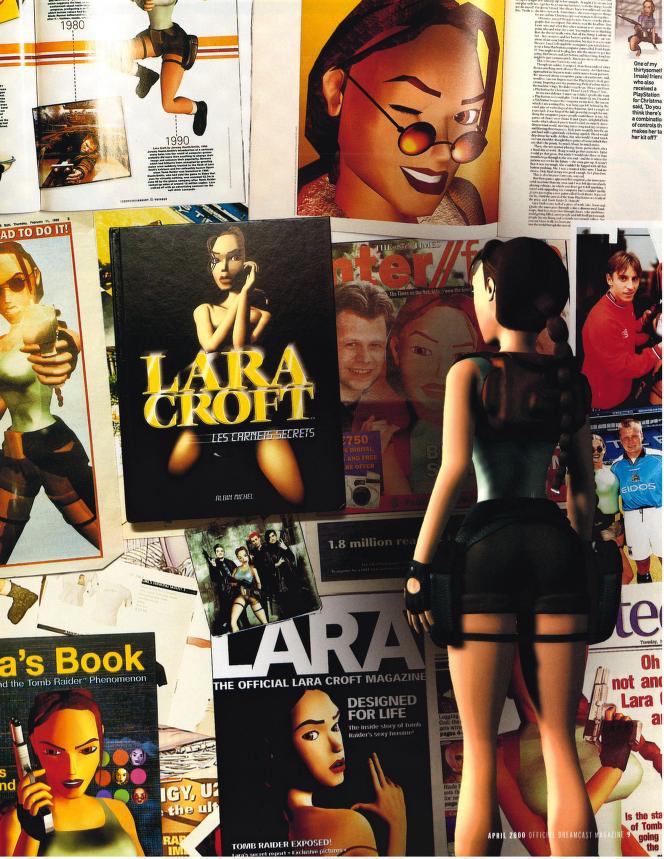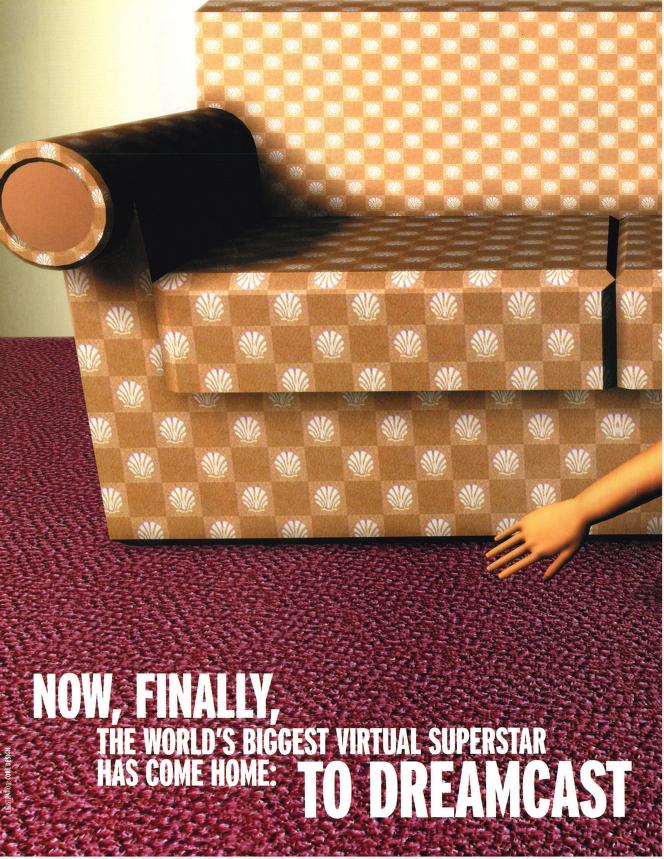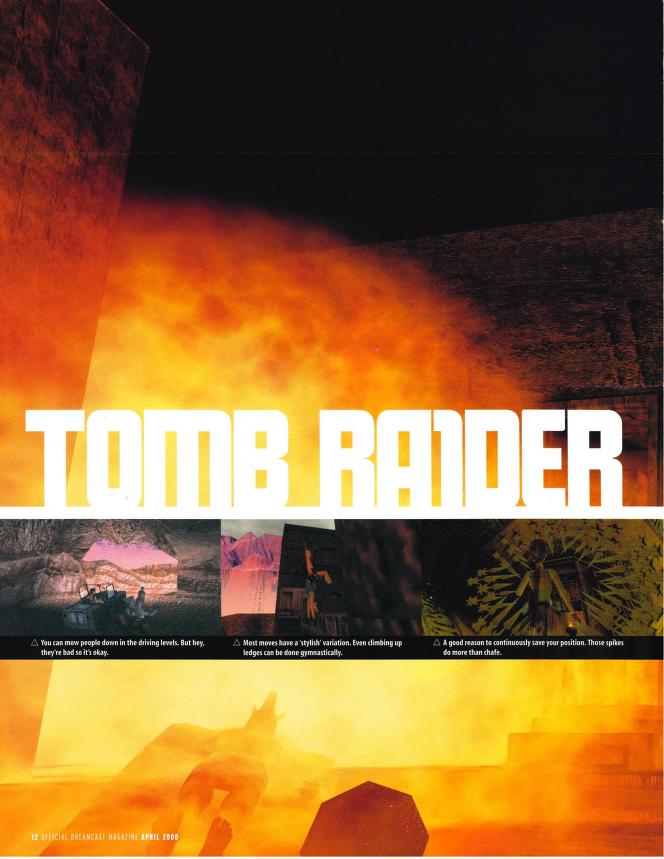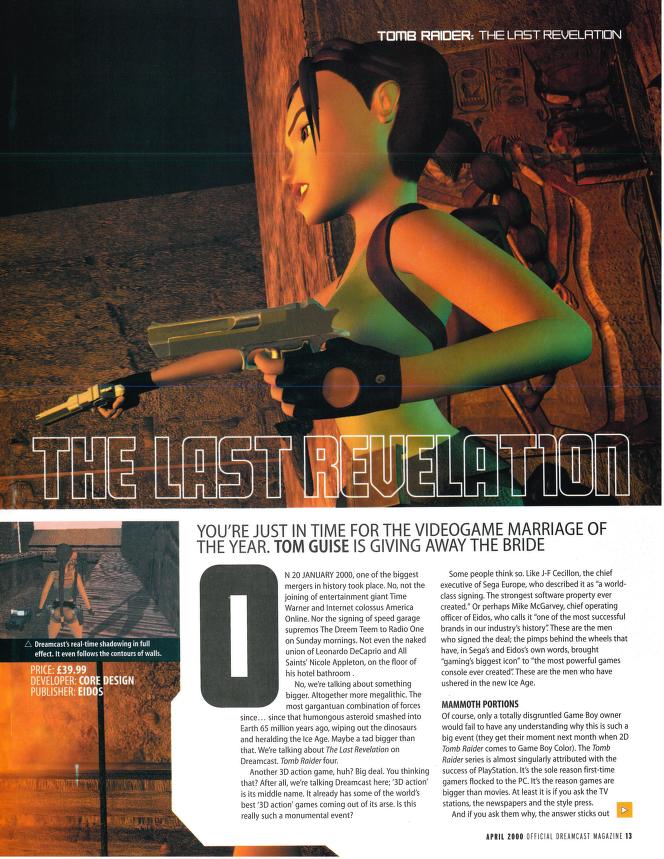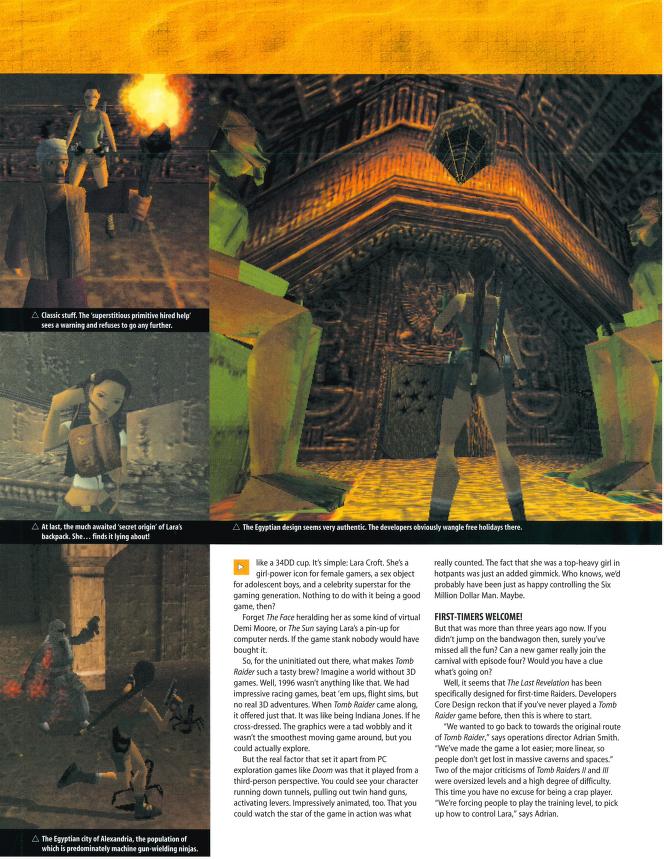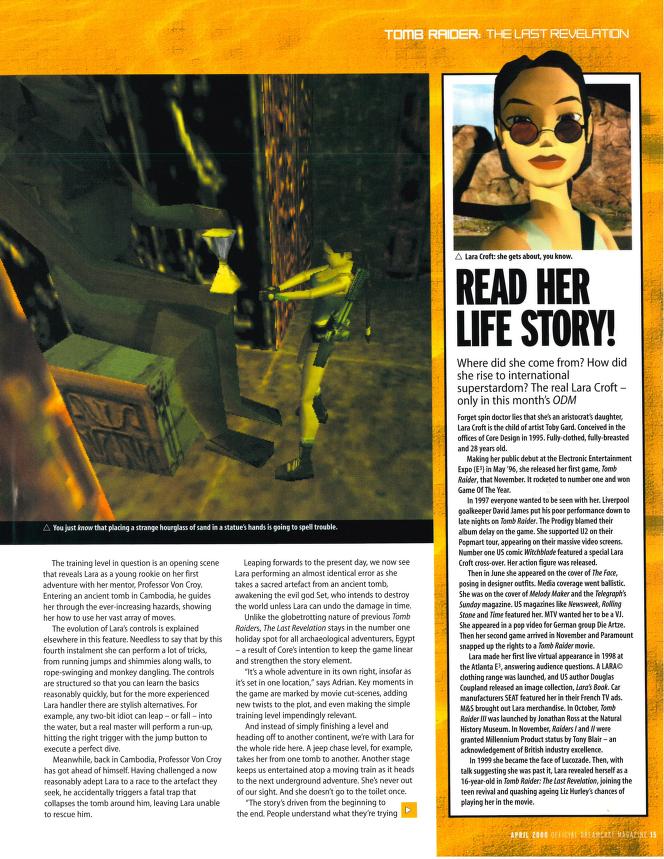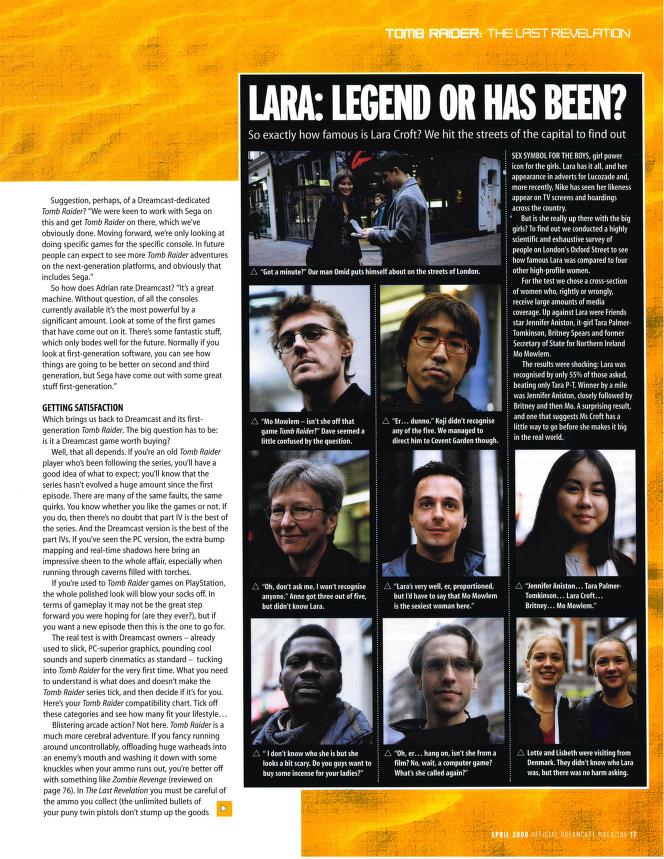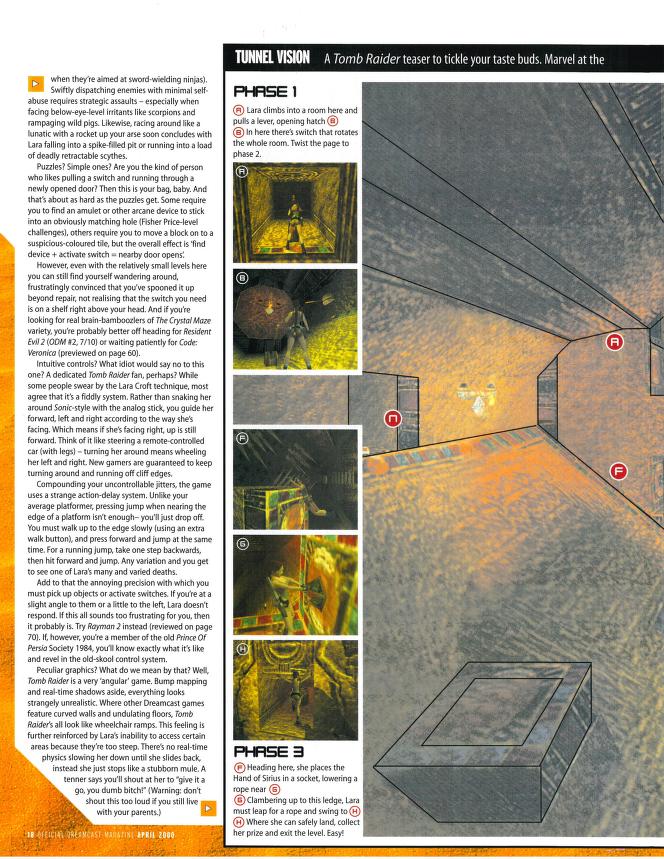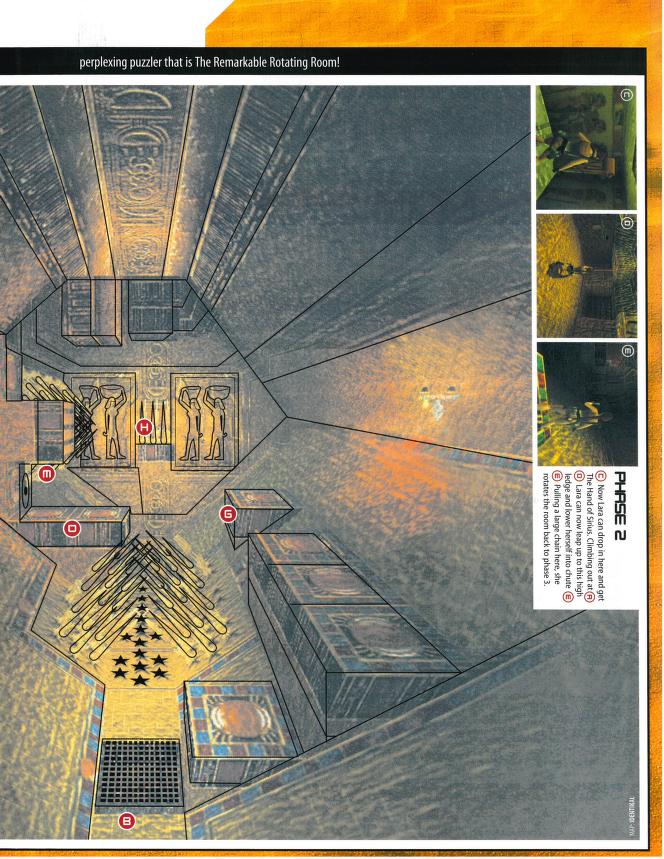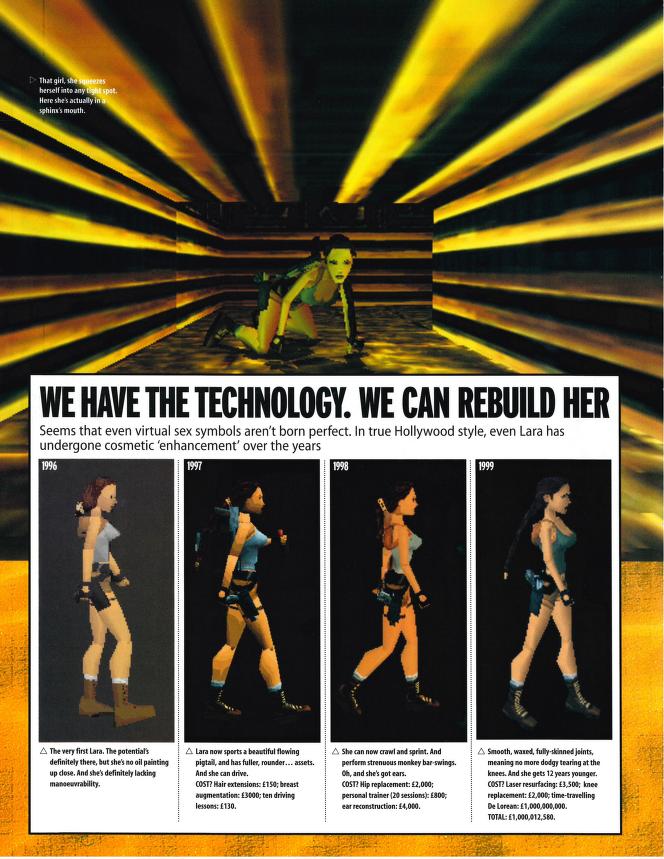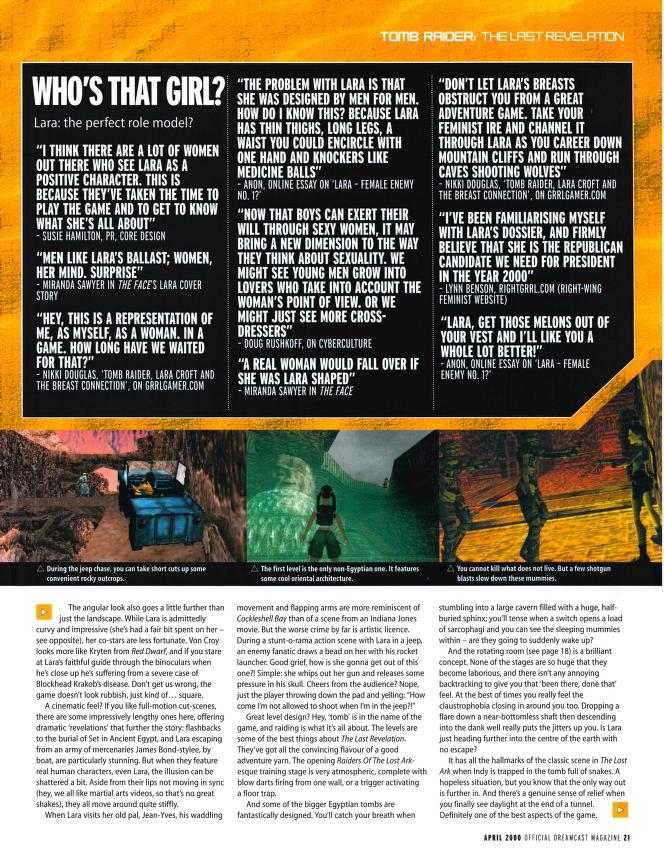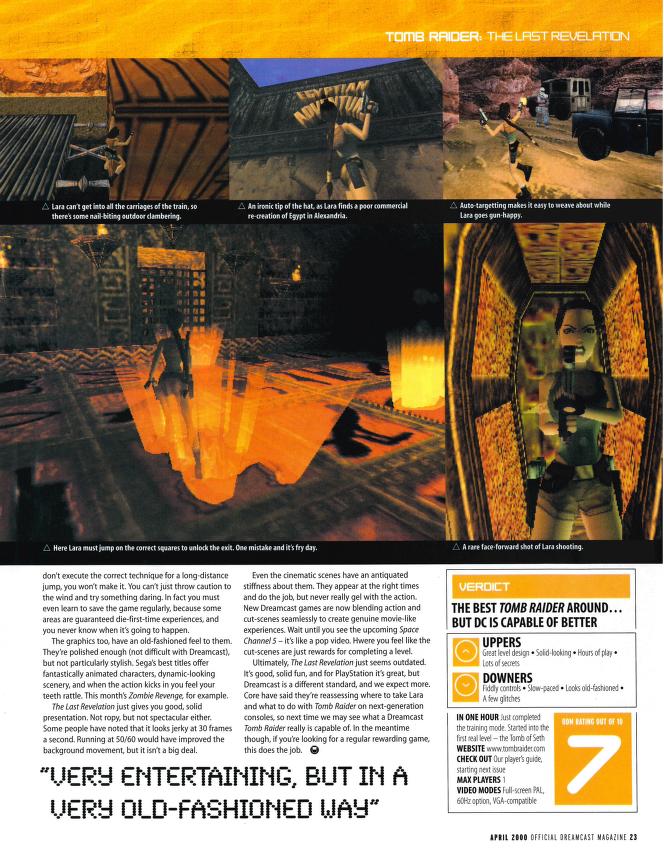
Tomb Raider and Lara Croft’s chronicles on print media – Part 2
Lara-Mania
Tomb Raider may have made Croft into gaming’s hottest star, but Tomb Raider II made her into a global phenomenon. By 1997, Lara-Mania was in full swing, and the party would keep going well into the early 2000s. Top Cow began producing a comic book series (no relation to the Mean Machines strip) in 1999, and would continue for fifty issues (not including one-shots, crossovers, and the spin-off series, Tomb Raider: Journeys). Croft even spawned her own magazine, which featured large reprints of the Top Cow comic, as well as contests and giveaways of rare Tomb Raider goodies.
Generation X author Douglas Coupland authored Lara’s Book in 1998, which was a fandom-centric exploration of Croft as she existed in pop culture. In it, Coupland confessed his love of video games, and shared the empowering experiences playing Tomb Raider had on him. The first part of the book adhered to a mixed media, scrap book layout, featuring renders of Croft along with staggered text and multi-coloured backdrops, teasing bits of information about her private life with tabloid-like spreads. It also acknowledged the fact that she was just a made-up character; the obsession she had spurred born concurrently of the desire to know more about her world, and to bring her into ours.
Prima walkthrough author Kip Ward then took over, with the middle section of the book dedicated to walkthroughs for Tomb Raider, Tomb Raider: Gold, and Tomb Raider II. Unlike the clean, step by step layout of a typical Prima guide, however, these walkthroughs were staggered blocks of screenshots and text – the reader’s gaze pulled about the page as though they were decoding messages left behind. The short sentences almost mimicked a notebook, telling players how to safely traverse the trials of each tomb.
In 1999, Precedence Entertainment released Tomb Raider: The Collectable Card Game.[5] A sort of hybrid board game and card game, players could tackle randomized or pre-set levels either solo or with a group. The cards featured quotes from Croft, as well as screenshots from the first three games, along with renders and original art. It may not have been Tomb Raider II, but it gave gamer and non-gamers alike (as well as Saturn owners) a way to keep up with Croft’s adventures.
Though Core Design may have skipped SEGA’s 32-bit console for the next two entries, there were, surprisingly, plans to bring Lara to SEGA’s 16-bit console, the Mega Drive. According to a report by SEGA Nerd’s Luiz Nai, Brazilian Mega Drive developer and SEGA partner TecToy had pitched a 16-bit version of the game.[6] Though it never came to light, and information on it is extremely scarce, it goes to show just how far the game’s appeal reached.
(Tomb Raider) Revelations
“Now, finally, the world’s biggest virtual superstar has come home: to Dreamcast.”[1]
By the year 2000, SEGA fans had been missing out on Tomb Raider for nearly four years. However, in Official Dreamcast Magazine (ODCM) #4, it was revealed that Eidos’ exclusivity deal with Sony had come to an end, and Tomb Raider IV: The Last Revelation would be coming to the SEGA Dreamcast in early 2000.
In ODCM’s preview of the game, Core Design’s Adrian Smith was asked what fans could expect from the port.[2] The game was announced just over a month before the intended release date, meaning fans wouldn’t have to wait long to get their hands on the new, and apparently improved, Dreamcast version. Smith stated that they kept development of the Dreamcast version secret due to the exclusivity deal with Sony, but now that it had run out, could proudly showcase the title, stating that Core Design had, “leapt at the chance to boost its lovely lady up a handful of polys to 128bit.”[3]
When addressing the now infamous and somewhat sore point of Core Design abandoning the Saturn, Smith said, “We’ve always been there. Lara was originally there with the launch of Saturn. We’re delighted that we can give Tomb Raider IV: The Last Revelation back to Sega.”[4]
The preview explored some of the port’s features, including the game being boosted to run at 60 frames-per-second and the enhanced lighting system, citing, “(shadows) cast off of walls and ceilings from light sources, it looks really, really dramatic.”[5]
ODCM also pressed Smith regarding the game’s (tempered) reception on PC and PlayStation. Though confident in the product, Smith did openly acknowledge that Tomb Raider was a six-year-old game, and that they needed to start looking towards the next generation of hardware.[6]
Sadly, that next generation seemingly did not include the Dreamcast. Smith was hesitant to commit further to SEGA’s 128-bit console, despite Core Design’s apparent enthusiasm for it, and stated they were not looking to bring any more games onto the Dreamcast aside from the already announced Fighting Force 2.[7]
The ODCM preview was only a page long, though the spread of big, bright, original art and screenshots showcasing the new version of the game did communicate some excitement for the title. However, despite Croft’s global brand power, ODCM was on to something in the fact that opinions had started to sour by the fourth game, if only slightly. There were still hardcore fans of the franchise, but the divide was apparent – specifically, the divide was seemingly drawn in the Atlantic Ocean.
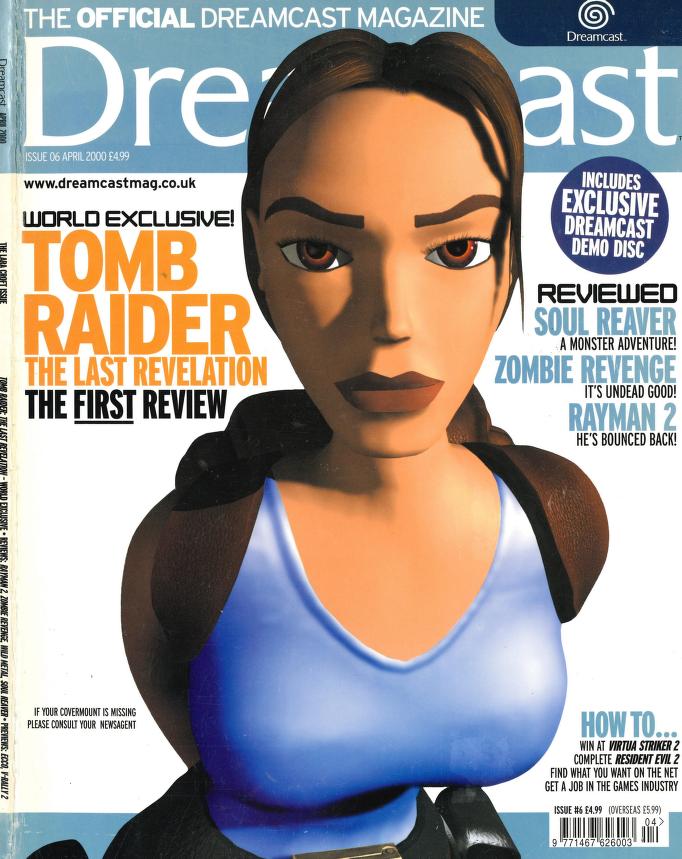
The Official Dreamcast Magazine UK (ODM)’s coverage of the game addressed many of the same criticisms touched upon by ODCM, though its exploration of them was far more in-depth, and its focus on the game’s apparent dated design more forgiving.
Tomb Raider IV was reviewed in ODM #6. Not only was Croft featured on the cover of the magazine, but the review was preceded by a recap of what she has been up to since 1996. ODM dedicated over a dozen pages to the game in the issue; ODCM, by contrast, gave the game only four pages over two issues.
The article’s opening pages are renders of Croft, captioned with the text, “Since Lara Croft made her very first appearance on the SEGA Saturn in 1996 she’s become a global phenomenon.”[9] This firmly rooted the reader’s mindset, selling Tomb Raider as a SEGA franchise. That’s not to say ODM ignored the Sony exclusivity deal, with writer Tom Guise citing that the original’s success was almost entirely attributed to the PlayStation brand.[10] However, the tone was still much more celebratory in ODM than their North American Dreamcast coverage counterparts. SEGA Europe’s Chief Executive J-F Cecillon stated that Tomb Raider coming to the Dreamcast was, “a world-class signing. The strongest software property ever created.”[11]
“She’s a girl-power icon for female gamers, a sex object for adolescent boys, and a celebrity superstar for the gaming generation. Nothing to do with being a good game, then?”[12] ODM‘s article was more than a review; it reminded readers why Tomb Raider was so renowned, and why it still mattered. It explored Croft’s mass market appeal, with columns showcasing her various media dealings. More importantly, however, the article explained exactly why Tomb Raider IV was such an important step for the franchise.
While the first three games were linked by the consistency of main character, and by details like her manor and collection therein, they were all self-contained experiences. Tomb Raider IV, by contrast, told a much more personal story. Players started the game as a young Croft, mentored by the famous Werner Von Croy (in place of the traditional manor training level). The story was set entirely in Egypt save for this opening level, and players never left Croft’s side for very long, giving the whole game a sense of continuity, and urgency, in light of the personal and apocalyptic circumstances.
In contrast to his comments in ODCM #4, Smith stated in ODM #6, “We can only do the game at 30 frames per second. It would probably run at 60 frames per second [the maximum TV rate], but all the animations for Lara are produced at 30.”[14] However, ODM stressed the port’s other achievements, touting the improved lighting effects, and how they made the game so much more atmospheric, even if contrasted against some rather primitive looking polygons.
ODM also highlighted the Dreamcast exclusive gallery of renders, unlocked by making progress in the game. Here, Croft is shown in a number of locations, including at home, playing with Dreamcast peripherals like the arcade stick and light gun. Most interesting, however, is the remix of the game’s main theme by Paul Oakenfold which played when in the gallery screen, Guise stating, “Even if you’ve read every publication Lara’s been in, you won’t have seen a lot of these pictures before.”[15]
Guise openly addressed the game’s shortcomings, both as they existed in the original launch on PlayStation and PC and in how they had carried over to the Dreamcast, though did point out that Croft’s polygon count had indeed increased over time, and this was not 1996’s Tomb Raider, stating, “Don’t get us wrong, the game doesn’t look rubbish, just kind of… square.”[16]
Guise also addressed the control system, stating how controls in games may have evolved since 1996, but that’s not to say the system didn’t work for Tomb Raider.[17]
Ultimately, ODM scored Tomb Raider IV 7/10, closing with, “It’s good, solid fun, and for PlayStation it’s great, but Dreamcast is a different standard, and we expect more.”[19] There is a lot of respect given to the franchise, and the pages dedicated to the Dreamcast port are obviously written by a fan trying to communicate why the game is so enjoyable, in spite of its dated design.
By comparison, ODCM’s review of Tomb Raider IV in issue #6 was only a two-page spread, and spent no time discussing the franchise’s impact or resonance, holding the game to account on its own merits. Reviewer Drew Cosner stated, “It’s got more tombs – but at this stage in the Eidos game, they’re all beginning to smell just a little musty,” titling the article, “Mediocre port of a mediocre sequel”.[20]
Before blockbuster annual franchises like Call of Duty, Core Design pumped out a new game roughly every twelve months on the same engine from 1996 through to 2001. Though the games did receive graphical upgrades and new innovations each entry, they were all built in the same framework, and by the fourth entry, some gamers were starting to get tired of it. Despite Smith not including the Dreamcast in what he considered “next generation” hardware, it’s clear many reviewers and gamers did, and porting a game that ran on a 32-bit console to a 128-bit one without major upgrades was a problem.
Continued in Part 3.
[1] Nick Jones, Tomb Raider: The Official Magazine Vol. 1, No.1. 2001.
[2] Nick Jones, Tomb Raider: The Official Magazine Vol. 1, No.2. 2001.
[3] Douglas Coupland and Kip Ward, Lara’s Book: Lara Croft and the Tomb Raider Phenomenon (Rocklin: Prima Publishing, 1998), 45.
[4] Ibid., 102.
[5] “Tomb Raider Collectable Card Game,” Tomb Raider Wiki, https://tombraider.fandom.com/wiki/Tomb_Raider_Collectible_Card_Game.
[6] Luiz Nai, “Unreleased Tomb Raider for Genesis, Duke Nukem 3D and other secrets behind TecToy (EXCLUSIVE Interview),” Sega Nerds, August 19, 2016, https://seganerds.com/2016/08/19/unreleased-tomb-raider-for-genesis-duke-nukem-3d-and-other-secrets-behind-tectoy-exclusive-interview/.
[1] ”Tomb Raider: The Last Revelation,” The Official Dreamcast Magazine, April, 2000.
[2] ”Lara Revealed,” Official Dreamcast Magazine, March, 2000.
[3] Ibid.
[4] Ibid.
[5] Ibid.
[6] Ibid.
[7] Ibid.
[8] The Official Dreamcast Magazine, April, 2000.
[9] The Official Dreamcast Magazine, April, 2000, 10.
[10] Ibid.
[11] Ibid., 13.
[12] Ibid., 34.
[13] Ibid.
[14] Ibid., 16.
[15] Ibid.
[16] Ibid., 22.
[17] Ibid., 18.
[18] Ibid., 23.
[19] Ibid.
[20] Drew Cosner, ”Tomb Raider: The Last Revelation,” Official Dreamcast Magazine, July/August, 2000.
References
2000. “Lara Revealed.” Official Dreamcast Magazine March 2000. Brisbane: Image Media.
Cosner, Drew. 2000. “Tomb Raider: The Last Revelation.” Official Dreamcast Magazine July/August 2000. Brisbane: Image Media.
Coupland, Douglas, Ward, Kip. 1998. Lara’s Book: Lara Croft and the Tomb Raider Phenomenon. Rocklin: Prima Publishing.
Guise, Tom. “Tomb Raider The Last Revelation.” The Official Dreamcast Magazine April 2000. London.
Jones, Nick. 2001. Tomb Raider: The Official Magazine Vol. 1, No.1. London: Titan Magazines.
Jones, Nick. 2001. Tomb Raider: The Official Magazine Vol. 1, No.2. London: Titan Magazines.
Nai, Luiz. “Unreleased Tomb Raider for Sega Genesis, Duke Nukem 3D and other secrets behind TecToy (EXCLSUIVE Interview).” SEGA Nerds. Accessed October 18, 2021. https://seganerds.com/2016/08/19/unreleased-tomb-raider-for-genesis-duke-nukem-3d-and-other-secrets-behind-tectoy-exclusive-interview/
Marie, Megan. 2016. 20 Years of Tomb Raider: Digging Up The Past, Defining The Future. Indianapolis: Prima Games.
Tomb Raider Wiki. “Tomb Raider Collectable Card Game.” Accessed October 18, 2021. https://tombraider.fandom.com/wiki/Tomb_Raider_Collectible_Card_Game


